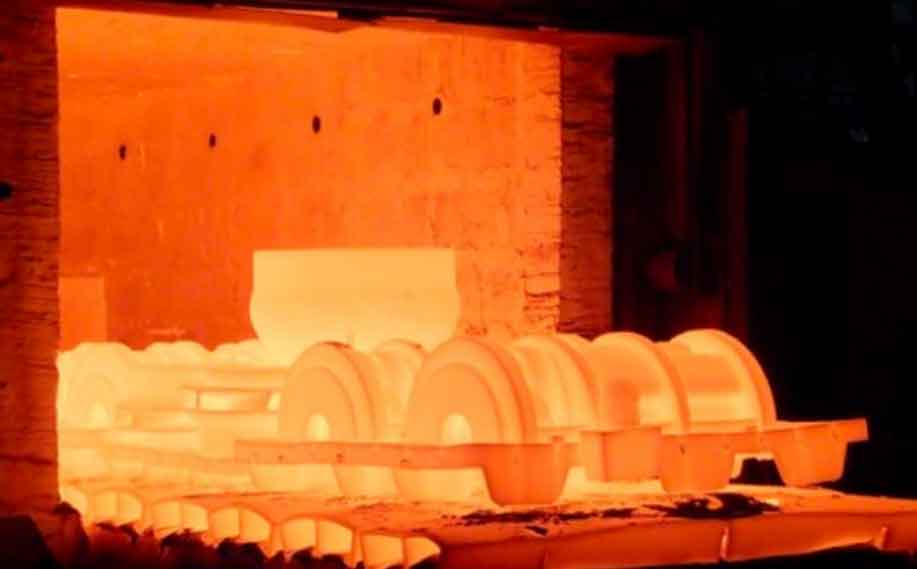Heat treatment can have significant effects on the microstructure and mechanical properties of lost foam castings. Lost foam casting is a process where a foam pattern is coated with refractory material, embedded in sand, and then molten metal is poured into the mold, vaporizing the foam and replacing it with the metal. Here is an exploration of the effects of heat treatment on lost foam castings:

- Microstructure modification: Heat treatment can modify the microstructure of lost foam castings. The heating and cooling cycles during heat treatment influence the nucleation, growth, and distribution of various phases within the metal matrix. It can promote the formation of desired microstructural features like refined grain structure, uniform distribution of alloying elements, and the elimination of defects such as porosity.
- Grain refinement: Heat treatment processes such as solution treatment and subsequent quenching can lead to grain refinement in lost foam castings. Rapid cooling after solution treatment suppresses grain growth, resulting in a fine and homogeneous grain structure. Fine-grained castings generally exhibit improved mechanical properties, including higher strength, hardness, and fatigue resistance.
- Phase transformations: Heat treatment can induce phase transformations within the metal matrix of lost foam castings. For instance, in some aluminum alloys, solution treatment followed by aging can promote the precipitation of fine intermetallic phases. These precipitates can strengthen the matrix, improving the mechanical properties without sacrificing ductility.
- Stress relief: Lost foam castings can develop residual stresses during the solidification and cooling process. Heat treatment can relieve these stresses, reducing the risk of cracking or distortion in the castings. The controlled heating and cooling cycles help in relaxation of the internal stresses and improve the dimensional stability of the castings.
- Mechanical property enhancement: Heat treatment can enhance the mechanical properties of lost foam castings. Depending on the alloy and the desired properties, heat treatment can increase the casting’s strength, hardness, toughness, and wear resistance. The specific heat treatment parameters such as temperature, time, and cooling rate need to be carefully optimized to achieve the desired mechanical properties.
- Ductility improvement: Heat treatment can also improve the ductility of lost foam castings. Proper heat treatment processes can help reduce the presence of brittle phases, refine the grain structure, and minimize the formation of defects like porosity or inclusions. These improvements contribute to increased ductility and better resistance to cracking or fracture.
- Surface hardness: Heat treatment processes like case hardening or induction hardening can be applied to the surface of lost foam castings to improve their surface hardness and wear resistance. These techniques involve heating the surface and then rapidly cooling it, resulting in a hardened layer while maintaining the desired properties in the core.
It is important to note that the specific heat treatment parameters and techniques may vary depending on the alloy composition, casting geometry, and desired properties. Therefore, proper optimization of heat treatment processes for lost foam castings is necessary to achieve the desired microstructure and mechanical properties. Thorough characterization through techniques such as metallography, hardness testing, and mechanical testing is crucial to validate the effectiveness of the heat treatment process.
